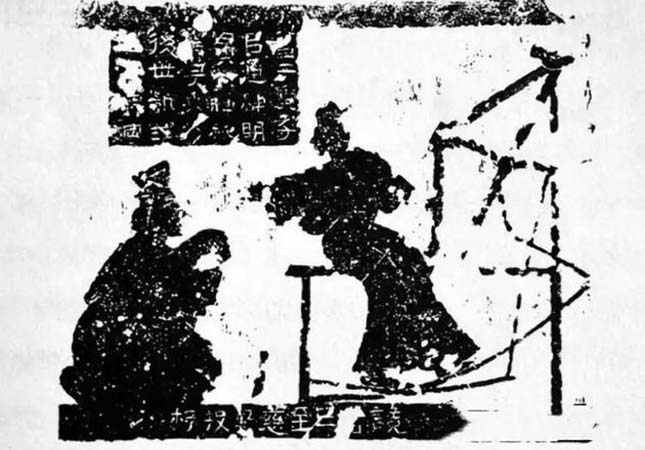An inclined loom is a textile machine with a foot-lifting device,the looms used in modern rural areas were developed on the basis of the inclined weaving machine. Basically, when I was a child, the bed sheets and quilts were woven by my mother.
There is still no reliable historical data to explain when and where it appeared. But according to historical records, we can see that the number of cloths and silks donated by royal during the Warring States Period was as high as a hundred times that of the Spring and Autumn Period, also many Han statues with inclined looms unearthed in various places in recent years, it means the invention of inclined weaving machine can be at least chased back to the Warring States Period and has been widely used in the areas that around Yellow River and the Yangtze River during Han Dynasty.
Han statues are the earliest image records of the inclined weaving looms that can seen by us currently. This kind of Han statues can be divided into 9 stone. Among them, the two stone portraits that unearthed in Honglou, Tongshan and Caozhuang, jiangsu Province showed the story of "Zengmu Tou Shu", which is talking about Zeng Shen's mother heard the rumor that "Zeng Shen( the students of Confucius in the Spring and Autumn Period) murdered" three times in a row, and she believed it to be true, she was weaving and threw a“shu”, which is a wooden shuttle in the ancient time, in anger then broken the weaving machine and walked away. In the picture, the person sitting in the plane and turning around to reprimand is Zeng's mother, and the person kneeling beside the shovel is Zeng Shen. The frame, warp surface, pedal lifting heddle plate and the devices on the tie-lifting that are similar to horse head with large front shape and small rear on the Han portrait stone are so clear to observe the machine details.

The inclined weaving machine in Han Dynasty is divided into 2 parts: the base and the frame.
The front side of the base part is provided with a seat plate, and the rear side is connected to a rectangular frame supported by 2 posts, which makes the frame and the horizontal base form an angle of 50° to 60°. The frame is a rectangular wooden frame with a warp beam called "Teng" in the Han Dynasty on the upper end and a cloth reel called "shuttle" at the lower end. The warp beam and the cloth winding shaft are also provided with a beam tooth for controlling the amount of let-off and the amount of cloth winding respectively.
The both sides of the middle of the frame has a "vertical fork",and the end of the frame is equipped with a lifting rod shaped like a "horse head", which is looped on a central shaft. The front side of the "horse head" is attached to the heald frame and the rear side is equipped with a warp wood that divides the warp into upper and lower layers. The bottom of the machine base has two foot levers in different lengths, the longer one is connected to a lifting lever, which controls the lifting of the heddle piece through the "horse head", the shorter one is connected to the lower side of the heddle.
The working principle is when weaver sits on the machine and steps on the longer pedal, the force is transmitted along the rod to the lever part of the “horse head”, the “horse head” leans forward, then the heald frame which connected to the bottom warp raises the bottom warp to its original level immediately. The central beam also give a press down to the warp at the same time to form a triangular shed then the weft feeding of the shuttle and the beating of the bamboo reed can be moved. When the foot leaves the longer pedal rod and steps on the shorter pedal rod so that the heald frame descends, the bottom warp loses tension and returns to its original shape, also the front of the“horse head” sags under its own weight, which makes the warp return to its original shape and ready to accept the next opening movement. We can turn the shaft at one end of the warp beam to release the warp while turning the shaft at one end of the winding shaft to tighten the warp and continue weaving after weaving a piece of fabric.




